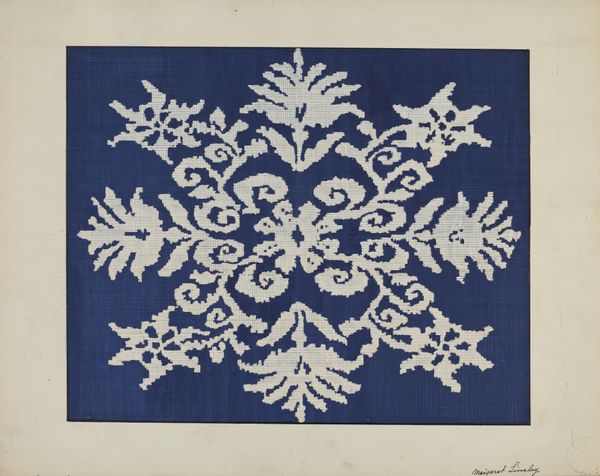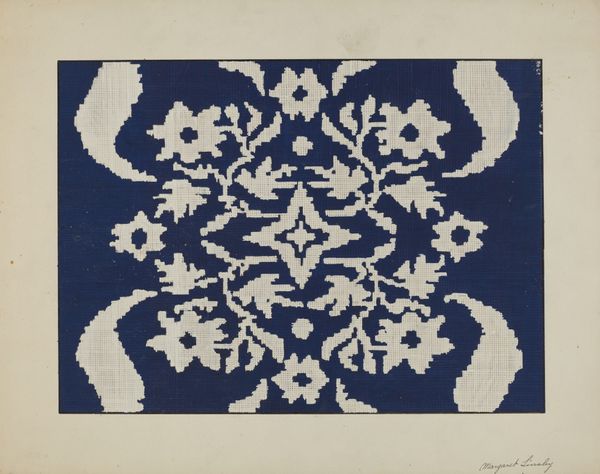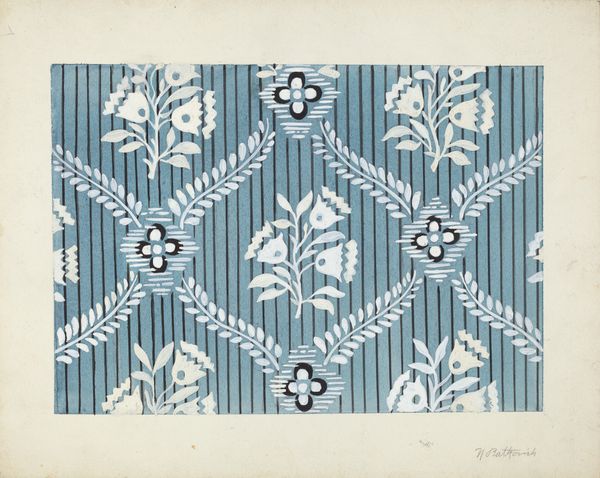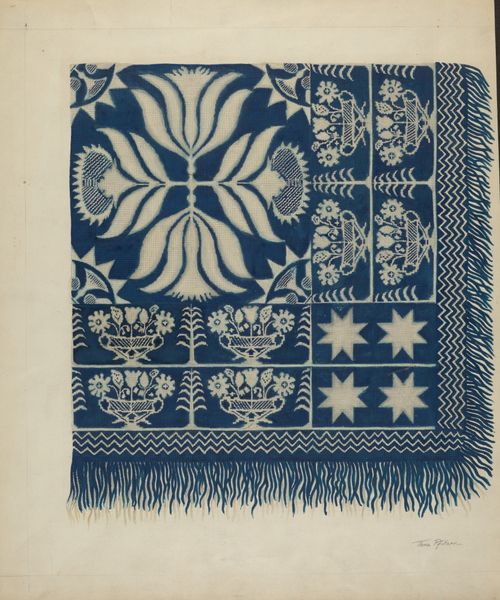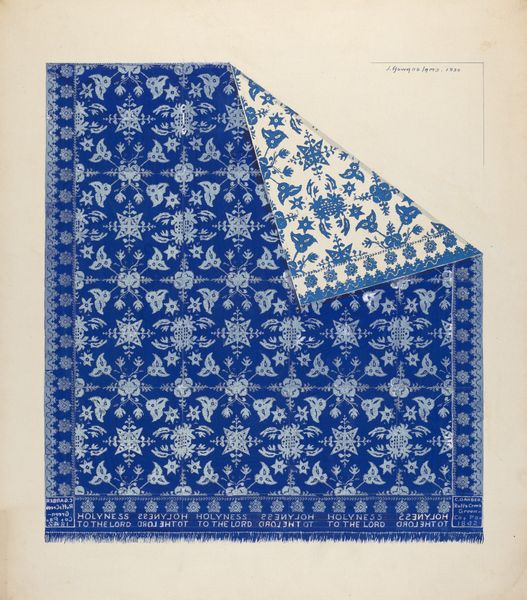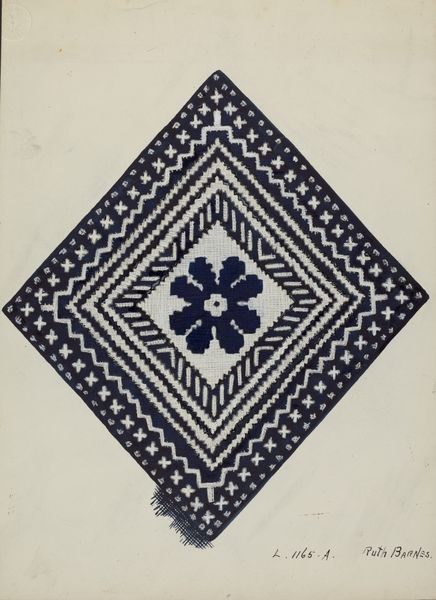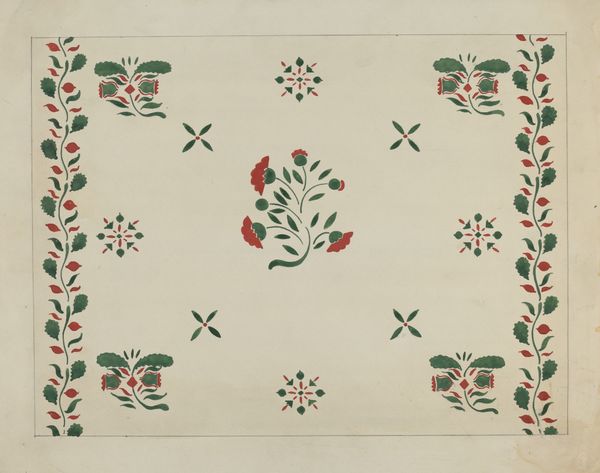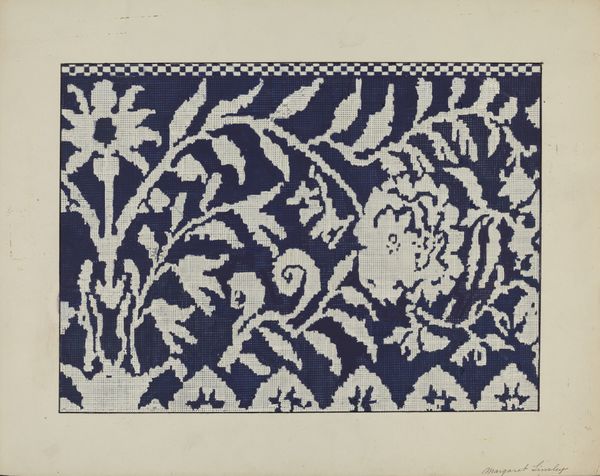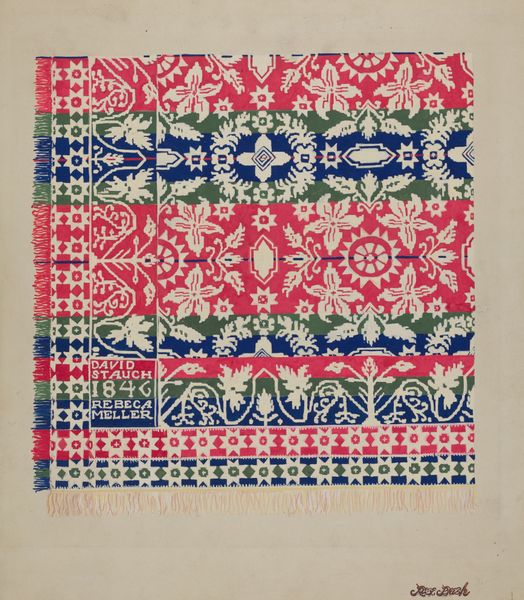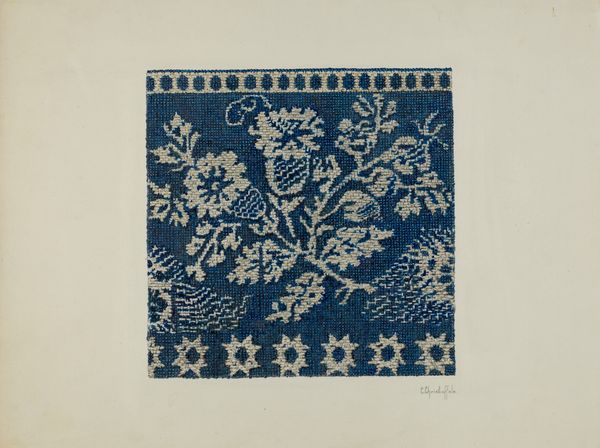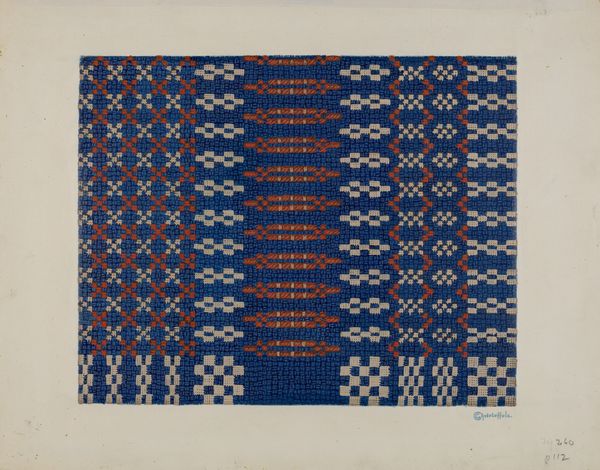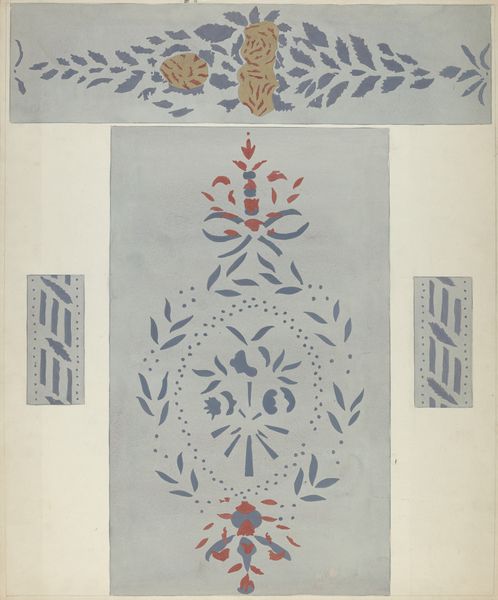
textile
#
pop art
#
textile
#
linocut print
#
folk-art
#
geometric
#
decorative art
Dimensions: overall: 27.8 x 35.6 cm (10 15/16 x 14 in.) Original IAD Object: 84" square
Copyright: National Gallery of Art: CC0 1.0
Curator: Looking at "Coverlet Section" by Margaret Linsley from around 1940, a linocut print of a proposed textile design... it feels incredibly calming to me. The bold, limited color palette of deep blue and off-white is almost meditative. Editor: Meditative? I see a stark, almost unsettling simplicity. There’s something about the way these folk-art motifs, the leaves and star-like flowers, are rendered in such a flat, graphic style, that makes me uneasy. Is it folk or is it pop? Curator: I think it's both, or rather, exists in the space between those categories. The iconography definitely borrows from folk traditions; these kinds of floral designs were commonly found on textiles made in home craft traditions. But you are correct to observe its clear debt to what will soon be "pop". In truth, Linsley probably borrowed from those, too. Editor: How so? The blue background feels a bit like enforced negative space. Were textile design drawings typically laid out so starkly? Curator: In a sense, it might serve as a prototype for patterns. Linsley here isn’t just depicting pretty flora, the work represents something akin to codified language, repeating specific symbolic shapes across different fields, indicating cycles or established natural symbols. Also, that the materials feel modern hints at where textiles may have been headed in mid-century manufacturing. Editor: So, even though the individual symbols are classic, the overall arrangement hints at something new: commercial production techniques breaking up long standing patterns, which traditionally would pass organically between persons... A subtle comment about modernization perhaps? Curator: Potentially, yes. I appreciate the intersection between artistic vision, the evolution of craft traditions, and its relationship to commerce. The symbols remain resonant even as the world transforms around them. We could also interpret the use of patterns as representative of broader society. The leaves representing collective growth... Editor: Growth at what cost? Given it's a single section removed from the entire coverlet, it invites one to question. It can be understood that Linsley captures more than the design of cloth, instead capturing a crossroads between society, identity and the way textiles act as political banners... Perhaps "unsettling" is a way of questioning the status quo? Curator: Well put. Linsley's work allows us to consider the multiple meanings imbued within patterns and material objects. From personal expressions to societal commentary, it is worth considering both. Editor: And in the ways folk tradition often subverts and reshapes dominant norms, maybe that unsettlement is a strength.
Comments
No comments
Be the first to comment and join the conversation on the ultimate creative platform.
